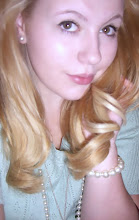CODES AND CONVENTIONS OF A DOCUMENTARY
Through the study of two documentaries already posted on the blog, it is easy to see that there are some codes and conventions within a documentary;
The camera angle is always a mid-shot during an interview,
Framing is important and is usually to the left or right - the person being interviewed isn't directly in front of the camera or looking straight at it,
Cut away shots are used in place of a jumpcut and are always relevant to the interview,
The eye line is around a third of the way down the screen as framing is important,
The background is always relevant to what the interview is about with the exception of vox pops, The light is behind the camera,
The questions are usually edited out, Jumpcuts aren’t used and are are edited out,
Graphics should be included e.g. the name of the person appearing beneath them when they first appear on-screen and shouldn't detract from the visuals,
Archive Footage is used,
The voice-over is appropriate to the programme,
A music bed is used that is relevant in some way to the documentary topic,
They are always informative and have a clear beginning, middle and end,
Some use reconstructions to add drama,
Match-on-action is often used,
Vox pops are used a lot,
Sound effects are often used,
Location shots are done to introduce audience to the location,
The Mise-en-scene is always relevant,
There is a variety of interviews,
Natural background sound is usually used during interviews,
A variety of camera angles are used,
The editing is always appropriate,
All have opening title sequences,
A person’s name is only shown once on-screen, which is when they first appear.

No comments:
Post a Comment